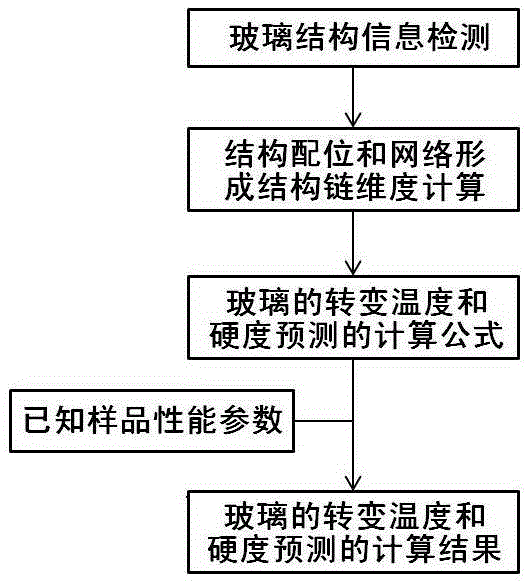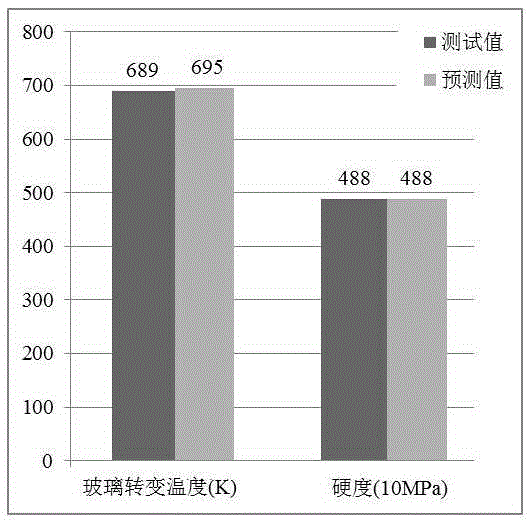Prediction method of transition temperature and hardness of glass
A technology of transition temperature and prediction method, applied in the direction of material inspection products, etc., can solve problems such as unsuitable glass hardness
Inactive Publication Date: 2016-03-30
EAST CHINA UNIV OF SCI & TECH
View PDF1 Cites 0 Cited by
- Summary
- Abstract
- Description
- Claims
- Application Information
AI Technical Summary
Problems solved by technology
Obviously, this single test method is not suitable for testing th
Method used
the structure of the environmentally friendly knitted fabric provided by the present invention; figure 2 Flow chart of the yarn wrapping machine for environmentally friendly knitted fabrics and storage devices; image 3 Is the parameter map of the yarn covering machine
View moreImage
Smart Image Click on the blue labels to locate them in the text.
Smart ImageViewing Examples
Examples
Experimental program
Comparison scheme
Effect test
 Login to View More
Login to View More PUM
| Property | Measurement | Unit |
|---|---|---|
| Transition temperature | aaaaa | aaaaa |
| Hardness | aaaaa | aaaaa |
Login to View More
Abstract
The invention discloses a predicating method for the transformation temperature and the hardness of glass. The predicating method comprises the following steps of carrying out network former coordination C1 for similar samples and testing the transformation temperature Tg1 of the glass before a step (1), and then carrying out the following predicating steps of (1) detecting glass structure information; (2) calculating the dimensionality of structure coordination and a network forming structure; (3) obtaining a calculating formula for predicating the transformation temperature and the hardness of the glass; and (4) obtaining calculating results of the transformation temperature and the hardness of the glass. By virtue of application, the predicating method disclosed by the invention is proved to have the advantages that the transformation temperature and the hardness of the glass can be precisely predicated, glass composition with unknown performances can be especially shown, the number of damaged detected glass samples can be greatly lowered, glass performance testing efficiency can be improved, the cost is lowered and the detection time is shortened; moreover, the predicating method is simple and convenient, so that the performances of the glass can be corrected without a large number of mechanical and dynamic parameters needed by the conventional method.
Description
technical field [0001] The invention belongs to the technical field of performance characterization testing of glass materials, and in particular relates to a method for predicting the transition temperature and hardness of glass. Background technique [0002] Glass has been widely used in various industrial fields because of its excellent light transmission, formability and mechanical properties. However, because glass is formed by rapid cooling of high-temperature melt, the detection of its thermal properties usually takes a lot of time and energy, and the detection method is relatively complicated. The transition temperature of glass is a very important thermal performance parameter, which plays an important guiding role in the relaxation of glass structure and the reduction of internal defects. The hardness of the glass bulk phase material at room temperature is an important criterion for determining its use value. However, because glass is a brittle material, its conve...
Claims
the structure of the environmentally friendly knitted fabric provided by the present invention; figure 2 Flow chart of the yarn wrapping machine for environmentally friendly knitted fabrics and storage devices; image 3 Is the parameter map of the yarn covering machine
Login to View More Application Information
Patent Timeline
 Login to View More
Login to View More IPC IPC(8): G01N33/38
Inventor 曾惠丹蒋奇刘钊李响季晓明
Owner EAST CHINA UNIV OF SCI & TECH
Features
- Generate Ideas
- Intellectual Property
- Life Sciences
- Materials
- Tech Scout
Why Patsnap Eureka
- Unparalleled Data Quality
- Higher Quality Content
- 60% Fewer Hallucinations
Social media
Patsnap Eureka Blog
Learn More Browse by: Latest US Patents, China's latest patents, Technical Efficacy Thesaurus, Application Domain, Technology Topic, Popular Technical Reports.
© 2025 PatSnap. All rights reserved.Legal|Privacy policy|Modern Slavery Act Transparency Statement|Sitemap|About US| Contact US: help@patsnap.com



